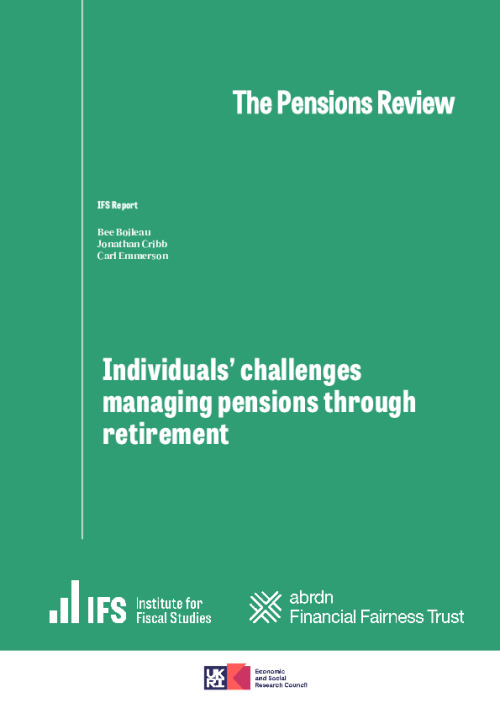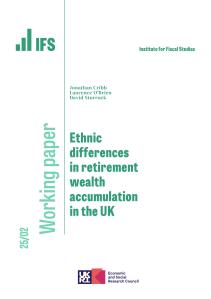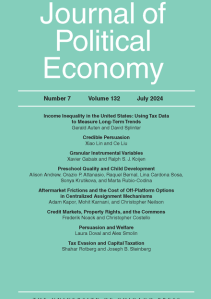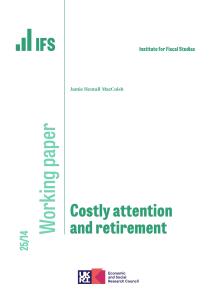Executive summary
This report is one of two reports on the management of pension wealth in retirement conducted as part of the Pensions Review, led by the Institute for Fiscal Studies in partnership with the abrdn Financial Fairness Trust. In this report, we examine the decisions that older individuals face as they draw on and manage their private pension wealth through retirement. In particular, we highlight the growing importance of defined contribution (DC) wealth, fuelled by automatic enrolment into (predominantly) DC workplace schemes, we document how retirees currently draw down on their wealth and we provide evidence for the wide range of financial risks that older people face. We utilise data provided by the Association for British Insurers, the Financial Conduct Authority, and the Office for National Statistics, as well as conducting our own new empirical analysis of household surveys. We have also benefited from insights provided by focus groups which have been run alongside this project by Ignition House.
The accompanying report (Boileau, Cribb and Emmerson, 2025) uses the evidence drawn together in this report in discussing potential policy improvements to help people make good financial decisions through their retirement.
Key findings
The importance of defined contribution pension wealth
- The share of retirees who will have to decide how to draw on their defined contribution (DC) pension wealth is set to grow significantly. Among 55- to 64-year-olds in 2021–23, six in ten (59%) had some DC pension wealth, up from around 44% fifteen years earlier. Meanwhile, the fraction with defined benefit (DB) pension wealth has fallen from 45% to 38%. This rise of DC wealth and fall of DB wealth will continue.
- The average size of individuals’ DC private pension wealth at retirement is set to rise as well. We estimate that, on current trends, median DC wealth at retirement (amongst those with some DC wealth) for people born in the early 1970s will be more than a third (38%) higher than among those born ten years earlier in the early 1960s (£102,000 compared with £74,000). A quarter of those born in the early 1960s with some DC wealth are projected to have more than £215,000; this rises by a third to having more than £286,000 among those born a decade later. A quarter, though, of those born in the early 1960s will have £25,000 or less, rising to £36,000 or less among those born in the early 1970s. These birth cohorts are likely to face particular challenges – resulting from the decline of DB pensions, combined with the fact that they did not experience a full career under automatic enrolment.
- DC pension wealth is likely to be considerable among those who have worked and contributed to a DC pension pot their whole adult lives – even for low earners. A lower earner (currently earning £18,000, e.g. working 30 hours a week on the 2024–25 minimum wage) working every year from age 22 to state pension age might expect to accumulate a pot of £150,000 given reasonable assumptions about economy-wide earnings growth and asset returns. An average earner (currently earning around £37,000) might accumulate a pot of £320,000. Therefore many, including relatively low earners, will need to make complex decisions about how to draw upon consequential amounts of DC pension wealth in the future.
- However, at the moment, most (although by no means all) current retirees’ decisions about DC pension wealth are relatively low-stakes. This is because a minority rely on DC pensions as a significant source of retirement income. For example, 19% of those aged 55–64 have more than £50,000 of DC pension wealth and less then £50,000 of DB pension wealth.
- Many of those with DC pension wealth do not know how they will access their pots, and the take-up of advice and guidance is low. Around four in ten 50- to 64-year-olds with DC wealth report not knowing how they will access this wealth. Nearly three-quarters (73%) of those in their late 50s with DC wealth had not encountered any sort of information on pensions or retirement choices in the last three years, and the majority of DC pots accessed for the first time were accessed by people who had not used any guidance or advice.
Patterns of wealth drawdown at older ages
- The ways in which people access DC pension wealth have changed dramatically since ‘pension freedoms’ were announced in 2014 and introduced in 2015. Annuitisation rates have plunged, with the number of annuity purchases falling by three-quarters between 2013 and 2024 (despite a partial recovery as annuity rates have risen since 2022). Remaining in active drawdown implies that retirees will have more complex financial decisions to take at older ages compared with if they have an annuitised income stream.
- Most DC pension pots are accessed before turning 65. In 2023–24, two-thirds of pension pots accessed for the first time were accessed by people aged under 65. This proportion was much lower among the minority purchasing annuities, among whom only 35% were aged under 65. Most of those with particularly valuable pots (worth £250,000 and above) also accessed them before turning 65, consistent with the fact that retirement before the state pension age is (increasingly) concentrated among the wealthiest.
- Non-annuitised wealth tends to be drawn down relatively slowly in retirement. In the case of DC pension wealth, a quarter (26%) of DC pots worth £250,000 and above from which regular withdrawals were being made (representing 124,000 pots in 2023–24) were withdrawn at annual rates of less than 2% in 2023–24, and a further 30% at rates of between 2% and 4%. Some of this slow drawdown is likely to have been due to the (soon to be withdrawn) inheritance tax benefits of keeping wealth in DC pensions. Financial wealth held outside of pensions is also drawn upon very slowly. Median real net financial wealth for those born in 1930–34 declined by just 13% between the ages of 75 and 89, and among those born in 1940–44 it declined by just 5% between the ages of 66 and 79.
- Significant fractions of older people’s wealth are held in owner-occupied housing – but downsizing, or other forms of equity release, are uncommon. In 2018–20, almost three-quarters of people in Great Britain in their 40s and 50s were homeowners, with the median value of their main property around £250,000. Both downsizing and equity-release products were unpopular among retired homeowners in our focus groups, implying that this wealth is unlikely to be accessed during retirement. Only 3% of non-retired homeowners in their 40s and 50s planned to use equity-release products to help fund their retirement in 2018–20.
Financial risks at older ages
- There are a set of important and interrelated risks people face in old age, which have consequences for their retirement incomes and material standard of living. These include longevity risk, investment risk and the risk of cognitive decline. Compared with a world with widespread DB pensions and where DC pensions had to be annuitised, people are exposed to these risks to a much greater extent.
- Longevity has improved dramatically in recent decades – in particular, the chances of living to very old ages have risen rapidly. Among men, the probability a 60-year-old will live to 95 has more than tripled between 1981 and 2024, rising from 4% to 14%. The probability a 60-year-old woman will live to 95 has more than doubled over this period, from 10% to 23%. This means people face the risk that they will live much longer than they expect and, as a result, exhaust their private financial resources and rely only on income from the state (and any owner-occupied housing they own).
- Relative uncertainty over life expectancy rises with age. 60-year-olds are much less likely to live 25% or 50% longer than their median life expectancy than are 75-year-olds or 90-year-olds. 16% of female 60-year-olds and 21% of male 60-year-olds in 2024 were expected to live 25% longer than their median life expectancy, compared with 31% of female and 36% of male 90-year-olds. In general, the more uncertainty over life expectancy, the higher the case for insuring against that uncertainty, so the potential value of annuitisation is higher at older ages.
- Investment risk has important consequences for outcomes in retirement. Those who actively manage their DC pension through retirement, rather than buying an annuity, leave themselves exposed to fluctuations in the rate of return on the investments they hold. These can result in large differences in the age at which DC wealth is exhausted. Those withdrawing 5% initially from a £100,000 pot at 67, and then keeping withdrawals fixed in real terms thereafter, might exhaust their pot at around age 93 if they enjoy a gross real return of 3%. But if the real return is 0%, this could be at age 86 – below median life expectancy for both men and women.
- Cognitive decline is another key risk at older ages. Memory tends to decline through retirement, particularly at later points. One measure of cognitive function declined by 18% between the ages of 66 and 79 for those born in the early 1940s. The decline was higher at older ages – a decline of 26% between the ages of 75 and 89 for those born in the early 1930s. These declines mean it is harder for people to manage their own (potentially complex) financial decisions at later points in retirement.
- Those who are widowed may face particular difficulties managing their finances. The risk of being widowed rises with age, and is higher for women (reflecting higher life expectancy for women and average age gaps within couples). 7% of men born in the mid 1930s were widowed by their early 70s, rising to 18% by age 85. Among women, the equivalent figures are 27% rising to 55%. Being widowed can have greater financial consequences where the deceased partner is the one who was better at, and took more responsibility for, managing finances. This is particularly likely to be the case among widowed women.












